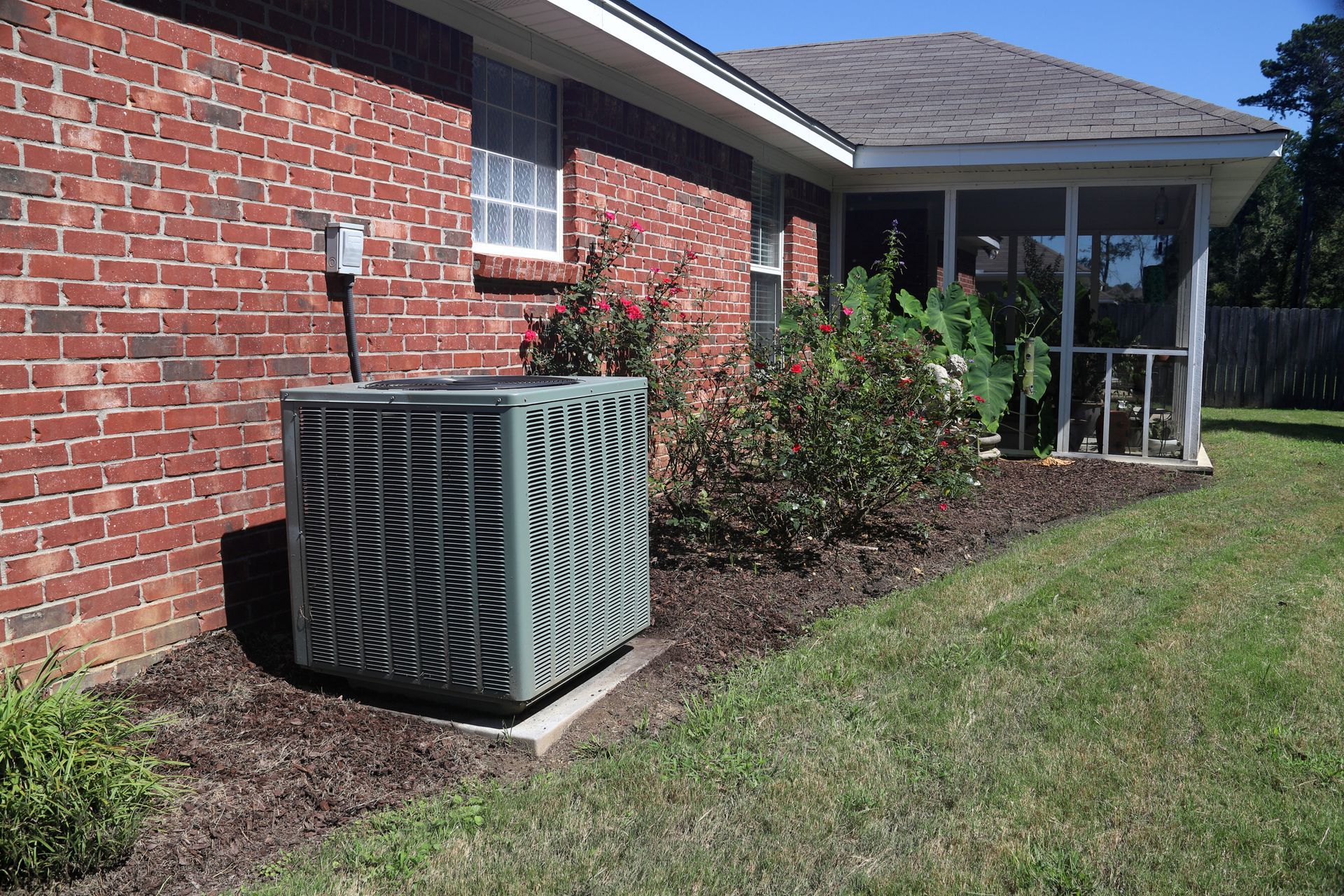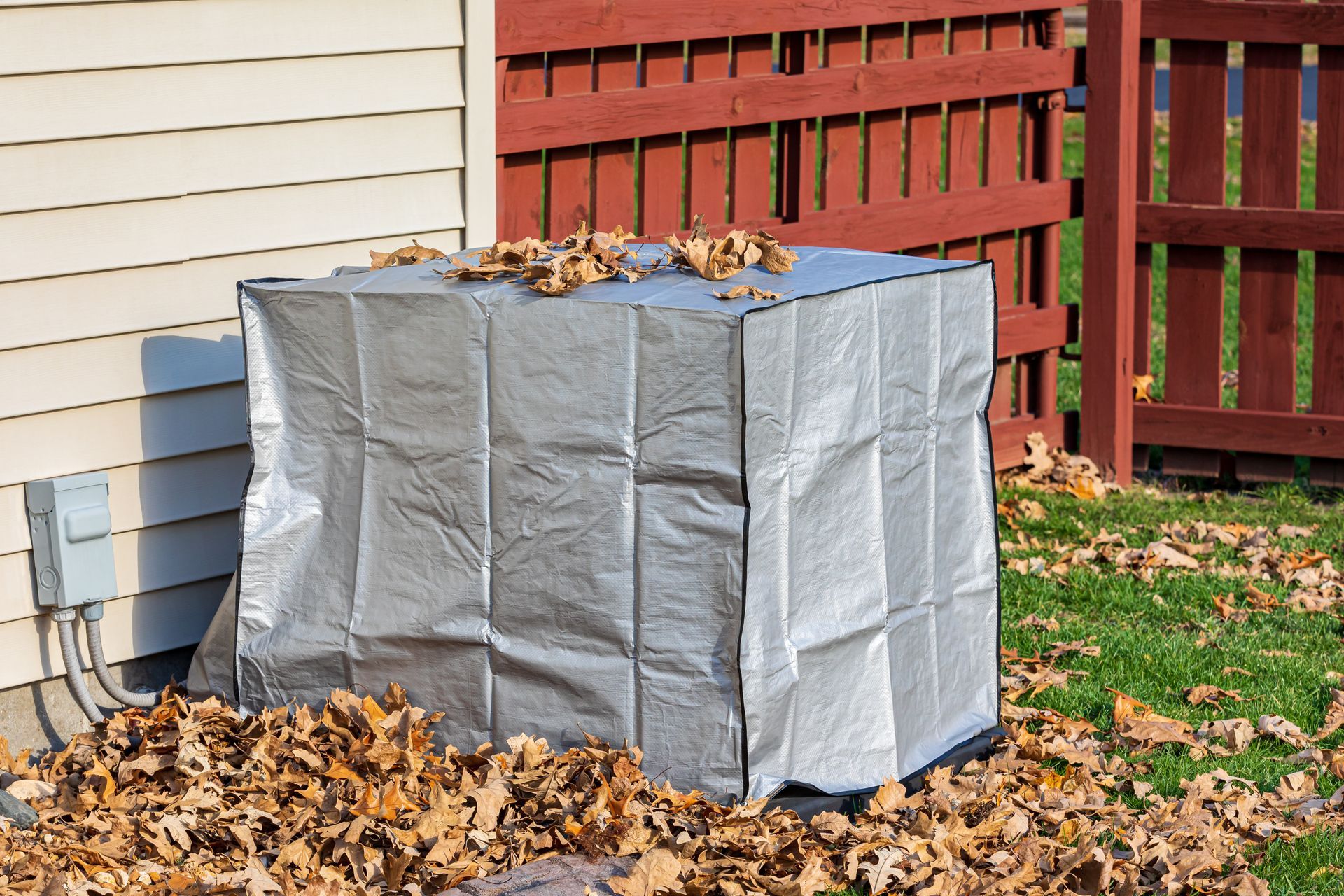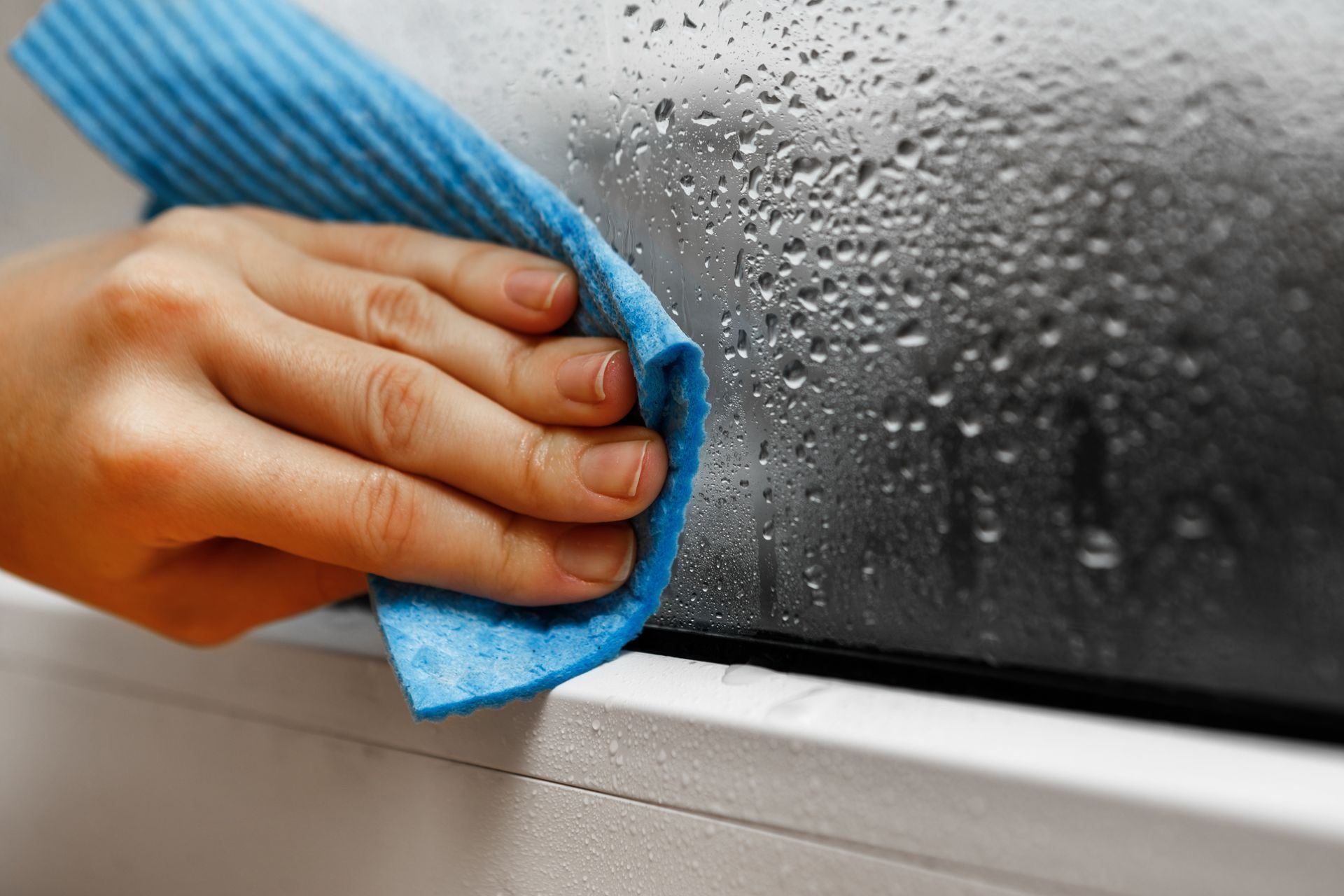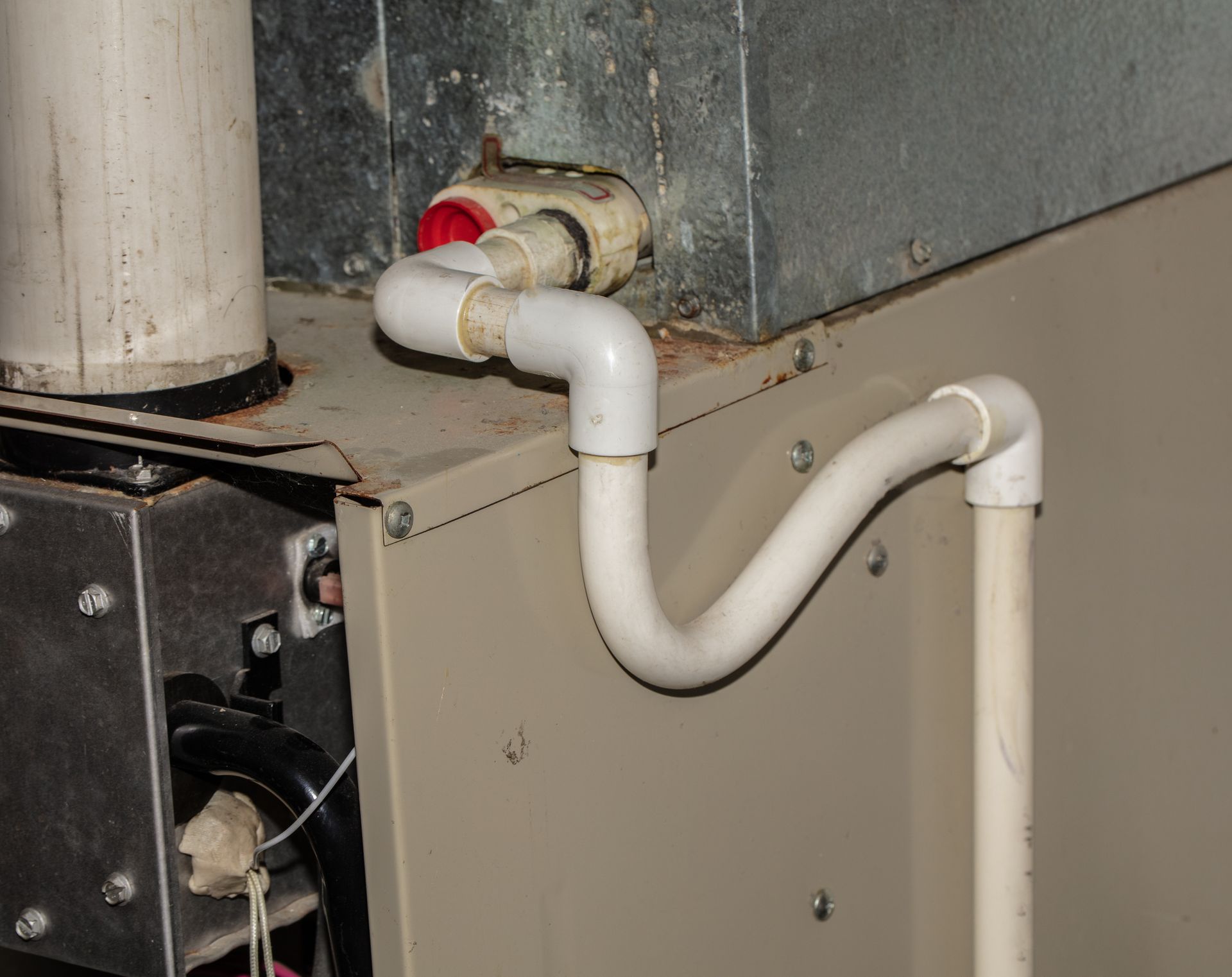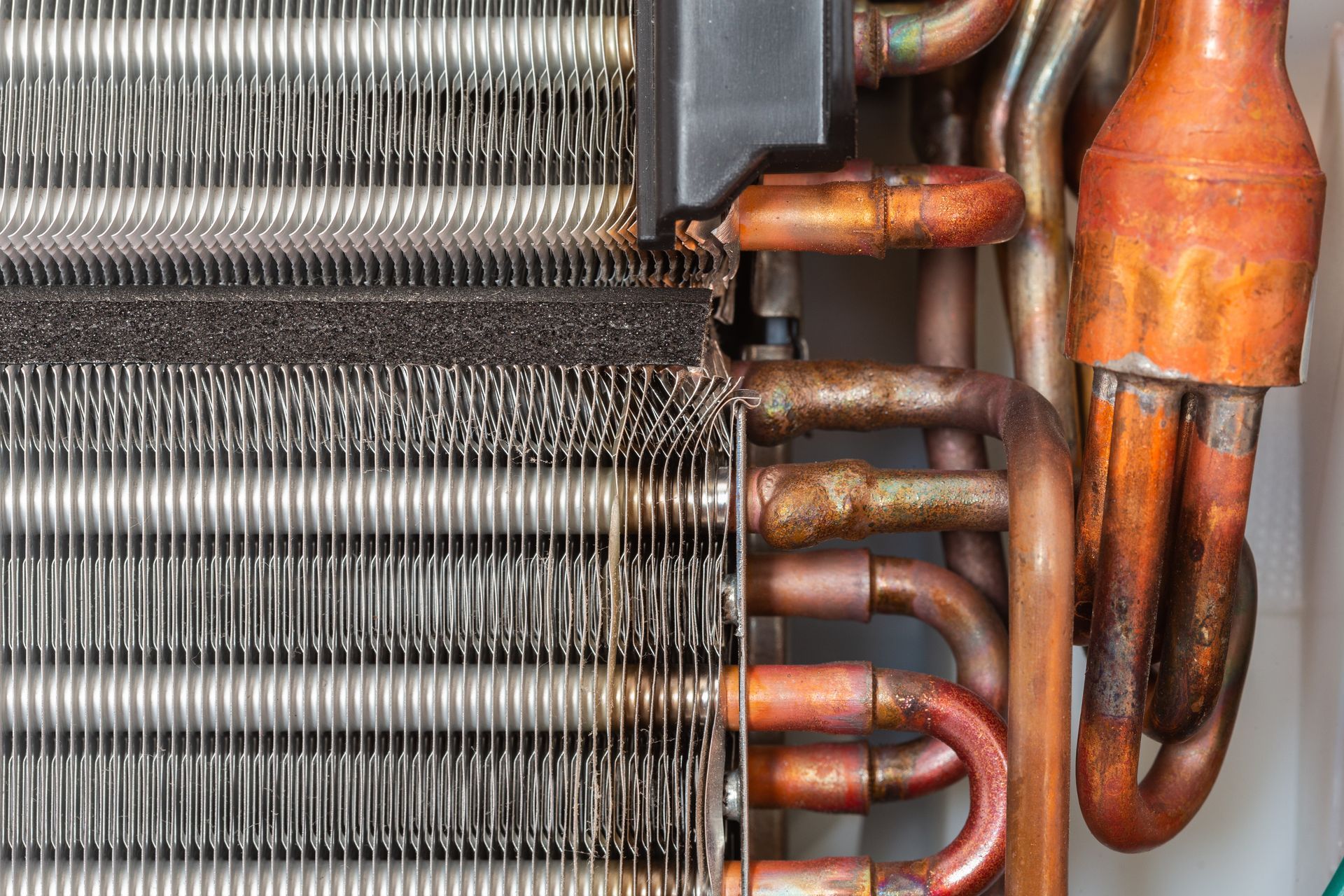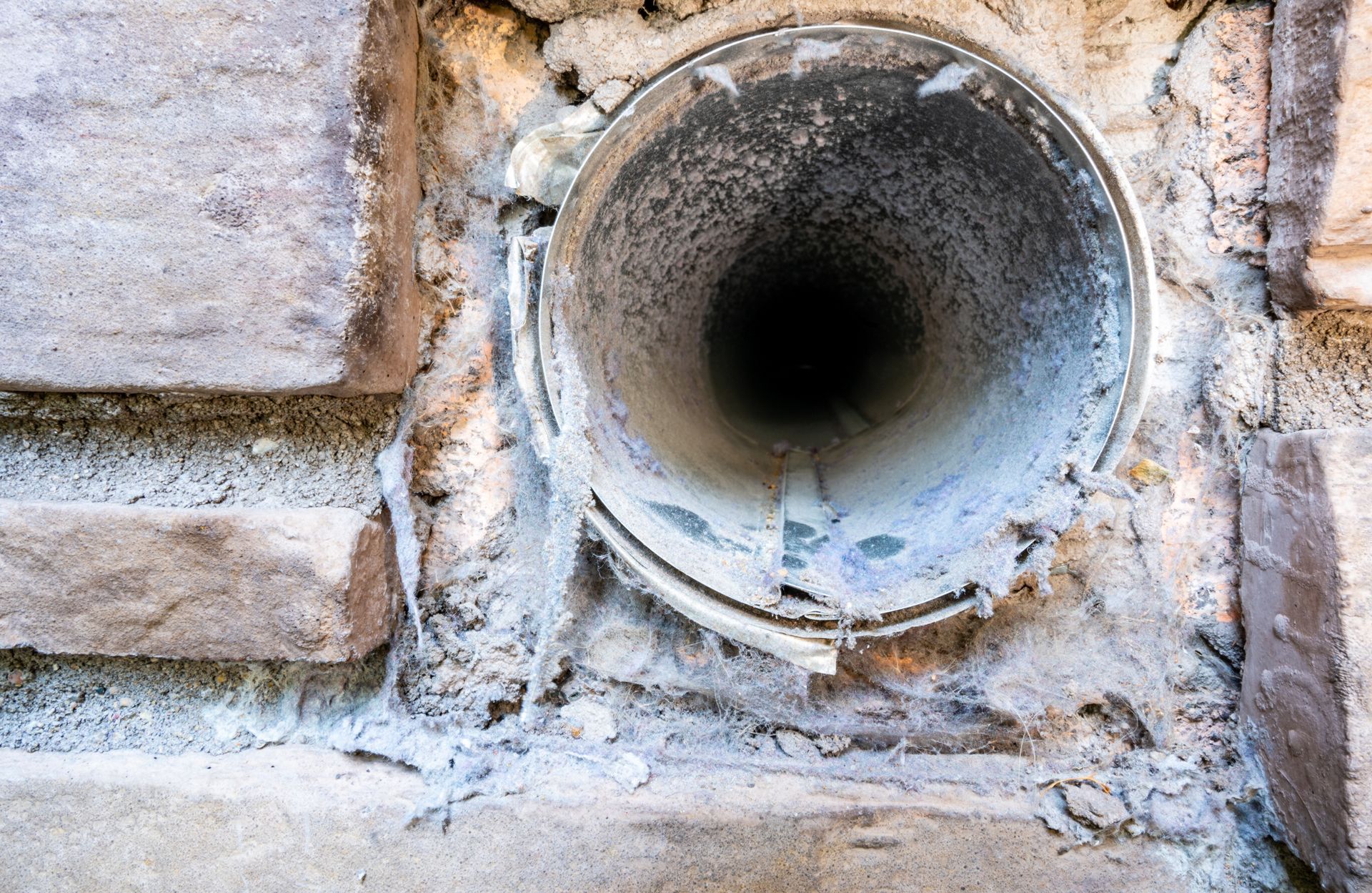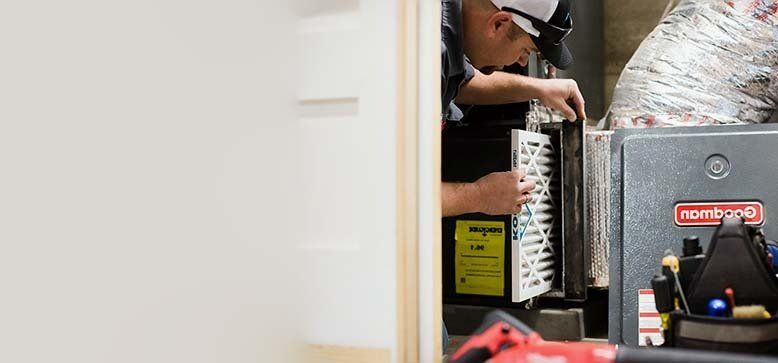Common Types of Air Conditioner Units
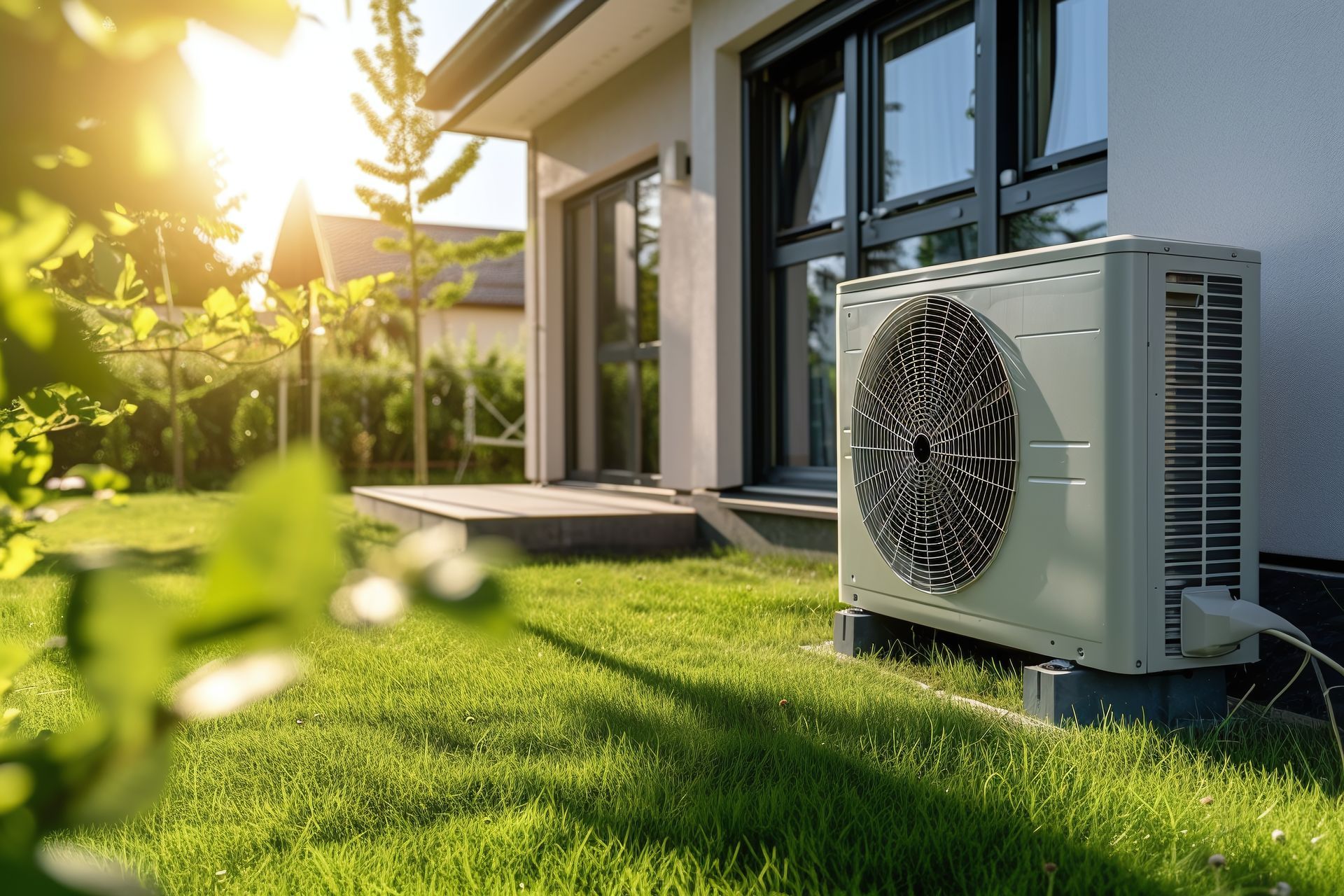
As temperatures soar, the quest for relief from the heat becomes a priority for many. While outdoor solutions like pools and shaded areas offer temporary relief, the true sanctuary often lies within the cool confines of an air-conditioned home. The modern market offers a variety of air conditioning solutions, each designed to cater to diverse needs and living spaces. The available options are vast and varied and range from portable units that offer flexibility and convenience to comprehensive split systems that promise efficient cooling throughout your home.
Understanding the common types of air conditioners available is crucial in selecting a system that not only meets your cooling needs but also aligns with your budget and energy efficiency goals. With nearly three-quarters of homes in the U.S. equipped with some form of air conditioning, the significance of choosing the right system cannot be overstated. Air conditioners are not just a staple of comfort but also a major household expenditure that accounts for about 6% of all electricity produced in the country. This guide dives into the various air conditioning systems and highlights their benefits, installation processes, and cost implications so homeowners have the knowledge they need to make an informed decision about their next air conditioning investment.
Central Air Conditioners
Central air conditioners represent an optimal solution for comprehensive home cooling that is especially suited for larger homes or spaces that require uniform temperature regulation across multiple rooms. These units circulate cooled air through pre-existing ductwork. The system comprises two principal components: an outdoor unit housing the condenser and compressor, and an indoor unit that contains the evaporator coils and air handler. This design not only facilitates the removal of heat from indoor air using refrigerant but also ensures a seamless distribution of cool air throughout the dwelling.
The integration of central air conditioners with smart thermostats heralds a new era of intelligent home cooling.
Pros:
- Central AC advancements allow homeowners to fine-tune cooling cycles, adjust temperatures remotely, and enjoy the convenience of automated climate control.
- These systems maintain a quiet and disturbance-free indoor environment due to the discreet placement of noisy components outdoors.
- Ducted central AC units create a uniformly cool and less humid home atmosphere.
Cons:
- The sophistication and size of central air conditioning systems comes with considerations of higher initial investment.
- The inability to focus cooling towards specific areas of a home has the potential for increased energy consumption, which could be reflected in utility bills.
Window Air Conditioners
Window air conditioners are an appealing choice for those seeking a budget-friendly alternative to the more costly central air systems. Priced between approximately $100 to $1,100, these units offer a straightforward solution for cooling single rooms or small areas without the extensive installation or financial investment required by more complex systems. Designed to fit snugly within a window frame, window air conditioners efficiently expel heat and condensation outside, while their internal fans deliver chilled air into the room. Their compact nature and the ability to control them via remote or smart technology add to their convenience and make them particularly suitable for condos, apartments, or single-story homes where central air conditioning isn't an option.
Pros:
- These systems are smaller and portable which means low upfront costs, ease of installation, and conservation of floor space.
- Window units can be focused on cooling one room within a home without cooling the entire house which can be efficient in certain situations.
Cons:
- The necessity of occupying a window can obstruct natural light and views.
- They can also present a potential safety risk if not installed securely.
- These units can be noticeably louder during operation compared to more discreet systems
- Their visibility from the exterior of the home may not be aesthetically pleasing to some.
For those prioritizing affordability, simplicity, and the need to cool smaller spaces efficiently, window air conditioners stand out as a tried-and-true solution that embodies a practical approach to personal comfort and temperature control. However, a home that needs to cool multiple rooms or large spaces may be better off with a ducted system that can distribute cool air to the entire home.
Smart Air Conditioners
Smart air conditioners represent the convergence of traditional cooling technology with the latest advancements in home automation and Internet of Things (IoT) capabilities. They offer a level of convenience and control that was once the stuff of science fiction and can be operated remotely via smartphones or tablets. The appeal of smart air conditioners lies in their versatility. Whether it's a window unit in a studio apartment or a sophisticated central air system in a sprawling residence, the addition of smart features enhances user experience across the board because it makes it possible to enjoy a seamlessly comfortable environment tailored to one's personal preferences.
Pros:
- Functionalities offered by smart air conditioners range from weekly scheduling, geofencing, temperature range control, and energy consumption tracking while allowing users to adjust settings and monitor their system's efficiency without needing to be physically present.
- Smart features promise not only enhanced comfort but also the potential for significant energy savings.
Cons:
- Smart AC features require a stable wireless connection to ensure the full range of features is accessible.
- The initial investment in a smart air conditioning unit can be significant, with prices varying widely based on the type and features of the system.
Despite these considerations, the growing demand for smarter, more efficient home cooling solutions highlights the value that smart air conditioners bring to the modern home.
Ductless Mini Split Air Conditioners
Ductless mini-split air conditioners offer a versatile and efficient solution for homes that lack an extensive duct system or contain spaces that were added after the original heating and cooling system was installed. These systems are particularly well-suited for cooling specific areas or rooms within a home like guest rooms, home additions, or seldom-used spaces without the need for installing new ductwork. A ductless mini-split system typically consists of an outdoor condenser unit paired with one or more compact indoor units that are wall mounted and connected by a conduit carrying refrigerant lines, electrical wiring, and a drain line for moisture. This configuration allows for a tailored approach to cooling that provides the flexibility to control the temperature in individual rooms independently to enhance comfort while potentially reducing energy costs due to unnecessary cooling of unoccupied spaces.
Pros:
- Mini-split air conditioners present a highly efficient cooling option with the advantage of occupying minimal floor space.
- The cost of single unit installation and operation can be a net positive when considered as a replacement for an underutilized central AC system.
- These systems are excellent for targeted cooling
Cons:
- The initial installation can vary significantly in price which makes it an investment worth weighing against your specific cooling needs and the layout of your home.
- They may not be the best choice for cooling large areas or entire homes without the installation of multiple units.
The benefits of ductless mini-splits like their ability to efficiently manage the climate in designated areas and the convenience of remote or smartphone control when paired with smart AC controllers can make them an attractive option for modern, energy-conscious homeowners looking for a customizable cooling solution. It is important to note that costs increase proportionately to the number of indoor units needed. This can drive costs up and eliminate the cost benefit of these types of air conditioning systems if they are needed as a whole house cooling system for a large home.
Portable Air Conditioners
Portable air conditioners provide a flexible and straightforward solution for individuals living in apartments, condos, or any residence where traditional air conditioning systems like window units or central air may not be feasible. Unlike window ACs that require installation and might be restricted by building policies, portable units offer the convenience of mobility combined with ease of use. Simply position the unit near a window and an electrical outlet and utilize the exhaust hose to vent hot air outside. This setup makes portable air conditioners an attractive option for temporary space cooling, with prices ranging approximately from $200 to $800. Their self-contained, freestanding design allows for easy relocation from one room to another which satisfies immediate cooling needs without the need for a permanent or complex AC installation.
Pros:
- Portability and convenience are the primary benefits offered by these types of air conditioners.
- Ease of setup and operation also make these systems optimal for those that are unsure of how to install a window unit.
- Portable AC units are often the cheapest options available for purchase due to their size and power.
Cons:
- Portable air conditioners occupy floor space, which can be a consideration in smaller living areas.
- These systems also tend to operate noisily, which may be disruptive in quiet environments.
- While they excel at cooling smaller spaces or providing spot cooling, their effectiveness diminishes in larger rooms.
Through the Wall Air Conditioners
Through-the-wall air conditioners offer a distinct cooling solution that marries the efficiency of mini-split systems with a unique installation method suited for small rooms or isolated spaces within a home. Unlike traditional mini-splits that require a connection through electrical and refrigerant lines, through-the-wall units directly interface with the outdoors through a wall cavity, eliminating the need for extensive ductwork or conduits. The cost of through-the-wall air conditioners ranges from approximately $850 to $3,000 including installation which presents a viable option for those seeking targeted cooling without the higher expense associated with more complex systems. This type of air conditioner is particularly appealing for applications where floor space is at a premium or in buildings where exterior aesthetics or structural considerations preclude the use of window or externally mounted units. Although the installation of through-the-wall air conditioners necessitates cutting a significant opening in the wall, the benefits, including a relatively quieter operation and a space-saving design, often outweigh the initial logistical challenges.
Pros:
- Floor-mounted variations leverage their low installation height to offer additional flexibility for spaces with unconventional architecture or where wall mounting is not feasible.
- Easy maintenance, particularly in terms of filter cleaning, is another benefit to consider as it can be done easily by homeowners
Cons:
- These units need to have portions of walls demoed for installation which can impact wall integrity.
- They also need unobstructed airflow around the unit to operate optimally.
- Best suited for smaller, defined spaces due to their capacity for even temperature distribution across larger or more open areas being limited.
Geothermal Air Conditioners
Geothermal air conditioning represents a forward-thinking alternative to traditional cooling and heating methods that offers an environmentally friendly and energy-efficient solution for temperature regulation within homes. Unlike conventional systems that rely heavily on external air temperatures and energy-intensive processes to cool or heat spaces, geothermal air conditioners utilize the consistent underground temperatures to their advantage. By circulating water through underground loops at a depth where the earth's temperature remains stable, these systems can efficiently cool a home during the hot months by transferring excess heat from the house into the ground, essentially using the earth as a natural heat sink. Similarly, in colder months, they extract warmth from the soil to heat the home which provides a dual-function system that can outperform standard furnaces and central air conditioners in both efficiency and operational cost savings.
Pros:
- The appeal of geothermal systems lies in their ability to leverage the insulating properties of the earth which results in significantly lower energy costs and a smaller environmental footprint.
- These systems are designed for longevity and often outlast traditional HVAC systems by several years.
Cons:
- The transition to geothermal technology comes with considerable upfront costs that can range from $15,000 to $35,000 for installation.
- The feasibility of installing a geothermal system is contingent upon having adequate yard space to accommodate the underground loops, which may limit its application in urban settings or properties with restricted outdoor areas.
Evaporative Air Conditioners
Evaporative air conditioners, also known as swamp coolers, offer an ancient yet remarkably sustainable method of cooling. These units range from small, portable models starting at around $100 to comprehensive systems for whole-home cooling that are priced upwards of $7,000. They use the natural cooling properties of water or ice rather than relying on chemical refrigerants. By passing warm air over water-moistened pads or through containers of ice, evaporative air conditioners cool the air through the process of evaporation. This not only reduces the temperature within the home but also adds moisture to the air which can benefit homes in dry, arid environments. This is in stark contrast to traditional AC units that often dehumidify the spaces they cool.
Pros:
- Evaporative coolers often run using less electricity than their traditional AC counterparts.
- They also have a lower carbon footprint as they rely on processes that do not require complex mechanics that force condensation using refrigerant and its associated pumps.
Cons:
- The effectiveness of these systems is inherently tied to the availability of cold water or ice which requires regular maintenance to replenish the water supply and ensure optimal cooling performance.
- Evaporative coolers are best suited to specific climates, particularly those with low humidity and moderately high temperatures.
- In regions where humidity is already high, these systems may exacerbate the problem and the indoor environment uncomfortably moist rather than cool and refreshing.
- Their cooling capacity may not match that of conventional air conditioners, which presents a limitation for those in need of more robust cooling solutions.
Hybrid / Dual Fuel Air Conditioners
Hybrid or dual fuel air conditioners represent an innovative approach to home heating and cooling, blending the energy efficiency of an electric air-source heat pump with the robust performance of a gas furnace. This system is engineered to optimize comfort and efficiency by automatically selecting the most effective heating or cooling method based on the external temperature. Homeowners can customize the temperature threshold for switching between the heat pump and the furnace which offers flexibility and control over their home's climate. In warmer months, the heat pump functions by extracting indoor heat and expelling it outside, thereby cooling the interior space. Conversely, during colder periods, the system reverses and draws heat from the outdoor air to warm the home. Should temperatures drop to a level where the heat pump's efficiency diminishes, the gas furnace activates to provide reliable warmth even in freezing conditions.
Pros:
- The primary allure of hybrid air conditioning systems lies in their potential to significantly reduce utility expenses and lower environmental impact.
- There is a significant push towards energy efficient air conditioning systems which often results in tax credits and rebates.
Cons:
- The sophistication of hybrid systems comes with a higher initial investment compared to traditional HVAC systems.
Important Considerations When Choosing an Air Conditioner
Selecting the right air conditioner for your home is not just about immediate comfort, it also involves considering a variety of factors that will impact your satisfaction, energy bills, and the system's effectiveness over its lifetime. To ensure you make a choice that aligns with your needs, preferences, and limitations, here's a detailed breakdown of the most important considerations:
- Budget
- Energy Consumption
- Space Requirements & Maintenance
- Cooling Power
- Location
- Home Size
- Home Layout
- Number of Stories
- Current AC System
Taking these factors into account will help you narrow down the vast array of air conditioning options to find the one that best suits your home's unique requirements, ensuring you achieve optimal comfort and efficiency.
Budget
Selecting the right air conditioner for your home involves careful consideration of a homeowner’s budget because the cost not only encompasses the initial purchase but also installation, maintenance, and ongoing operational expenses. The range of available air conditioning systems varies widely in price and is influenced by factors such as type, size, and the specific cooling needs of your home. To help navigate through the financial aspects of choosing an AC system, here's an overview of the estimated budget for each type, from the most budget-friendly options to the more substantial investments:
- Window Air Conditioners: Offer a cost-effective solution for cooling single rooms, with prices typically ranging from $150 to $800.
- Portable Air Conditioners: Similar in affordability to window units, portable air conditioners cost about $100 to $500, suitable for spot cooling and single rooms.
- Ductless Mini-Split Air Conditioners: While offering a more tailored cooling solution for one or two rooms, these systems can escalate in cost to cool entire homes, ranging from $1,200 to $20,000.
- Smart Air Conditioners: These systems incorporate advanced technology for energy efficiency. Smart ACs functionality commands a slightly higher premium than conventional units but are cost-effective in the long run. Smart AC controllers, adding intelligent capabilities to existing systems, cost between $70 and $130.
- Central Air Conditioners: Providing comprehensive cooling throughout the home, central air systems are more expensive, with costs ranging from $5,000 to $20,000 on average, yet they offer longevity and effectiveness.
- Geothermal Heating & Cooling Systems: The premium option in terms of both initial investment and operational efficiency, geothermal systems can range from $10,000 to $40,000 on average, but offer substantial long-term savings and durability.
When planning for a new air conditioner, it's crucial to weigh the upfront costs against the expected lifespan, maintenance requirements, and energy savings to determine the most financially sensible option for your specific needs and living situation.
Energy Consumption
Selecting an air conditioning system with a keen eye on energy efficiency is crucial for managing long-term utility expenses effectively. The efficiency of an air conditioner is often measured by its Seasonal Energy Efficiency Ratio (SEER) and Energy Efficiency Ratio (EER) ratings. These ratings serve as benchmarks for evaluating the energy consumption of cooling devices. The SEER rating reflects the total cooling output of an air conditioner over a typical cooling season, divided by its energy consumption in watt-hours. A higher SEER rating indicates a more energy-efficient system which can lead to substantial savings on electricity bills over time. Similarly, the EER rating measures the cooling capacity of an AC unit per hour divided by its power consumption in watts at a constant temperature. This provides an additional metric for assessing efficiency during peak usage.
It's essential to consider these ratings when choosing an air conditioner as they directly influence the cost-effectiveness and environmental impact of your cooling solution. While air conditioners with higher SEER and EER ratings may come with a higher initial price tag, their lower operating costs can offset the upfront investment over time. This makes them a smarter choice for those looking to reduce their carbon footprint and save money on energy bills.
Space Requirements
When selecting an air conditioner, it's important to consider the specific space requirements of your home to ensure optimal performance and efficiency. The size and type of space you're looking to cool significantly influences the best type of air conditioning system for your needs. For apartment dwellers, portable, mini-split, and window air conditioners offer versatile solutions that can accommodate the unique constraints of rental living like space limitations and the need for landlord approval for installations. Choosing an air conditioner that matches your space not only maximizes cooling efficiency but also prevents energy waste which ensures your living environment remains comfortable without incurring unnecessary costs.
Maintenance
Maintenance is a crucial aspect of owning an air conditioner that impacts both its longevity and efficiency. Single-room air conditioning options like mini-splits and portable units offer the advantage of simplicity in upkeep and often require straightforward maintenance routines with minimal repairs. These units typically just need basic care like regular filter cleaning and ensuring clear airflow which can be easily managed by homeowners. In contrast, central air conditioning systems, with their extensive ductwork, demand more involved and professional maintenance to operate optimally. Duct cleaning is another necessary part of maintaining a central system's efficiency and air quality. This service carries an additional cost of around $400 on average, which highlights the importance of considering long-term maintenance requirements and costs when selecting the most suitable air conditioning solution for your home.
Cooling Power
Cooling power is measured in British Thermal Units (BTUs) and is a critical specification to consider when selecting an air conditioner because it determines the unit's capacity to cool or heat a given space. BTUs signify the amount of energy required to adjust the temperature of one pound of water by one degree Fahrenheit which provides a standard to gauge the efficiency and suitability of an AC unit for your home. Common BTU capacities for residential air conditioners range from 6,000 for smaller rooms to 12,000 for larger living spaces. Selecting an air conditioner with the appropriate BTU rating is essential to ensure efficient operation without overburdening the system or undercooling an area. Systems with inadequate or overpowering cooling abilities can lead to multiple issues including inefficient energy use, reduced comfort levels, and undue strain on the unit. For individual rooms or smaller homes, portable or mini-split systems might suffice, whereas larger homes may require the more substantial cooling power of central, geothermal, or whole-home evaporative systems.
Location
The location of your home plays a pivotal role in determining the most appropriate air conditioning system to meet your cooling needs effectively. In areas where temperatures soar to extreme highs, relying solely on window air conditioning units may not suffice to maintain a comfortable indoor environment. For homes in such hotter climates, particularly in the southern regions, opting for a central air conditioning system or a ductless mini-split system could provide a more comprehensive cooling solution capable of handling the intense heat during summertime. Conversely, in regions where the climate remains relatively mild and the heat does not reach such extreme levels, smaller, less invasive cooling options like window or portable air conditioners might offer adequate relief. These options can provide targeted cooling to specific areas without the need for a more complex and potentially costly whole-home system.
Home Size
Home size significantly influences the type of air conditioning system best suited to effectively cool your living space. Smaller apartments and homes often require less cooling power which makes smaller air conditioning solutions like window or portable units adequate to achieve a comfortable indoor climate. These options can provide efficient cooling without the need for the extensive infrastructure and higher energy demands associated with more complex systems. Conversely, larger homes, with their more substantial square footage, demand air conditioning units with greater cooling capacity to circulate cool air throughout the entire space effectively. For these homes, central air conditioning systems or ductless mini-split systems might be necessary to ensure that cool temperatures are maintained evenly across all rooms and levels.
Home Layout
The layout of your home plays a crucial role in determining the most effective air conditioning strategy to maintain consistent cool temperatures throughout. An open-concept floor plan with fewer barriers to air flow may allow for more efficient cooling from a single source. In these scenarios, a through the wall unit or powerful portable unit may be enough to circulate cool air freely across the expansive space. In contrast, homes with a closed floor plan with multiple separated rooms and hallways may challenge the efficacy of standalone units due to the physical obstructions that impede air flow. For such layouts, a ducted central AC unit or a ductless mini-split system might be preferable as it allows for cool air to reach the different rooms. This distinction highlights the importance of considering your home's architectural design when selecting an air conditioning system to ensure optimal cooling efficiency and comfort.
Number of Stories
The number of stories in your home also significantly influences the internal temperature distribution due to the stack effect. Hot air naturally rises which causes upper floors to become warmer than lower levels. This phenomenon requires a tailored approach to cooling, where the upper levels may require additional cooling solutions to combat the accumulation of heat. Installing ductless mini splits or window air conditioners on these higher floors can offer an effective way to directly address the increased temperature and ensure those areas remain comfortable. This strategy highlights the importance of considering the vertical layout of your home and the specific cooling challenges presented by additional stories when planning your air conditioning approach to achieve efficient and even cooling throughout the structure.
Current AC System
Considering the current air conditioning system in your home is crucial when contemplating upgrades or replacements. If your home is already equipped with a duct system, transitioning to or upgrading a central air unit can be more straightforward and cost-effective because it can leverage the existing AC infrastructure. However, if your home lacks pre-existing ductwork, the decision to install a central air system comes with significant additional costs for duct installation, which can range from $1,900 to $6,000.
Is It Time for an Upgrade?
Deciding whether it's time to upgrade your air conditioning system involves evaluating its efficiency, suitability, and the range of features it offers to meet your current needs. Modern air conditioning units are designed to be far more energy-efficient than older models. They use significantly less energy which reduces a home’s utility bills and environmental impact. If your current system is outdated, consuming excessive energy, or failing to provide adequate cooling or humidity control, it's likely time to consider an upgrade. Modern systems are not only more efficient but also come equipped with features that can greatly enhance user comfort and convenience.
The right size and power of the air conditioning system are crucial for maintaining a comfortable and efficiently cooled environment. If a home’s AC unit has grown old and has experienced a loss in output or the home has been improved, an upgrade presents the opportunity to adjust these factors to better suit your home's size, layout, and specific cooling needs. If your current air conditioning unit falls short in efficiency, comfort, or fails to meet the specific demands of your living space, upgrading to a newer model could provide a more comfortable, cost-effective, and energy-efficient solution.
Contact GS Home Services if You Are Ready for a New Air Conditioner
Navigating the complexities of AC replacement or installation requires expert guidance and precision. GS Home Services is ready to provide top-tier assistance and will ensure your cooling system is perfectly suited to your home's unique needs. Our dedicated team of HVAC professionals brings a wealth of experience and a commitment to excellence and guarantees a seamless and satisfactory installation process. Don't let the task of AC replacement or installation overwhelm you. Reach out to GS Home Services today and let us handle your AC needs with reliable, efficient, and tailored solutions.
AC Type FAQs
What type of AC is best?
The best type of air conditioner depends on your specific needs. These factors include your home's size, layout, and location as well as your budget and energy efficiency concerns. For instance, central air conditioners are ideal for cooling large homes efficiently, while portable or window units might be more suitable for smaller spaces or apartments. Considering factors like these will help ensure you choose the most effective and efficient AC system for your circumstances.
What are the different central air conditioner types?
Central air conditioners primarily come in two types: split systems and packaged units. Split systems consist of an outdoor unit housing the compressor and condenser paired with an indoor unit that contains the evaporator coil and air handler. Packaged central air conditioners, on the other hand, combine the compressor, condenser, and evaporator in a single unit that is typically located outside on a concrete slab near the foundation which makes them a preferred choice for homes with limited indoor space for a split system.


